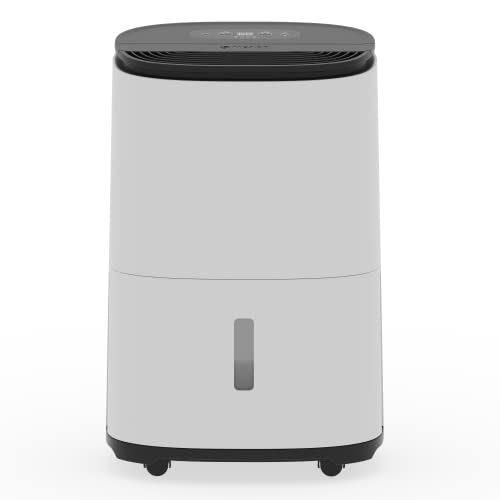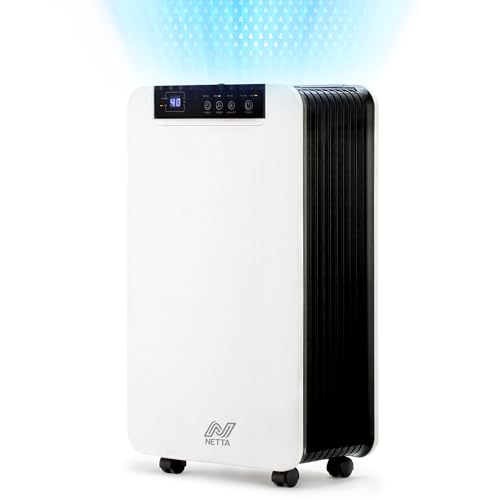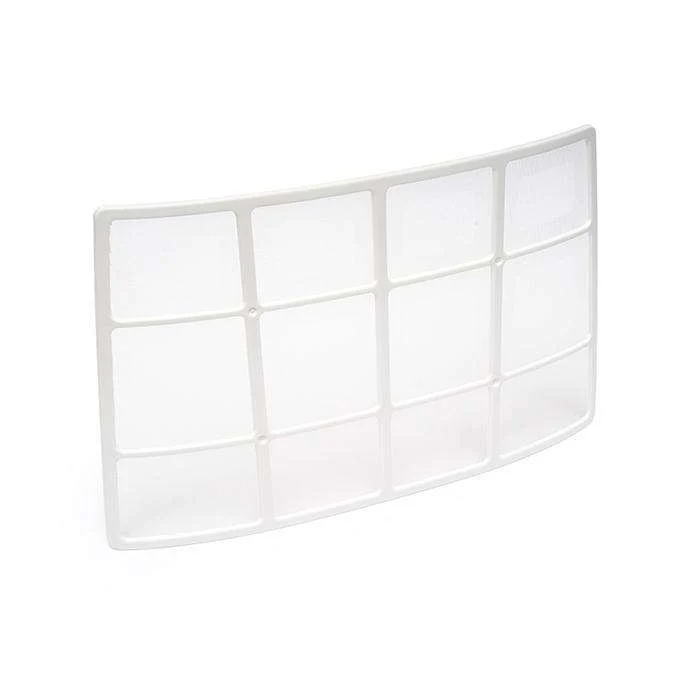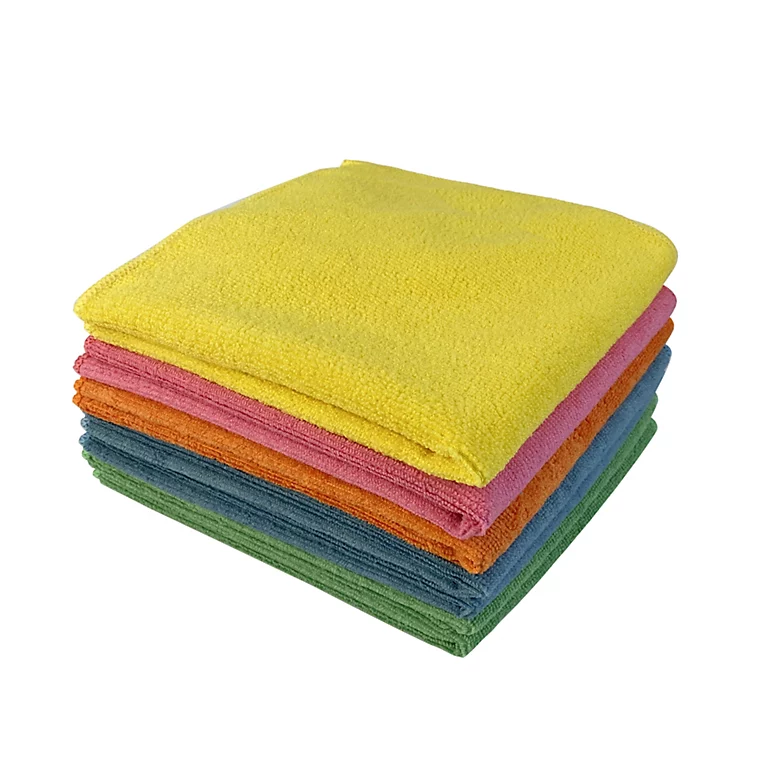Why cleaning a dehumidifier will keep your costs down — plus how to do it
Cleaning a dehumidifier is essential maintenance to ensure that it stays fresh and keeps working as intended. Here the pros reveal their tips and tricks
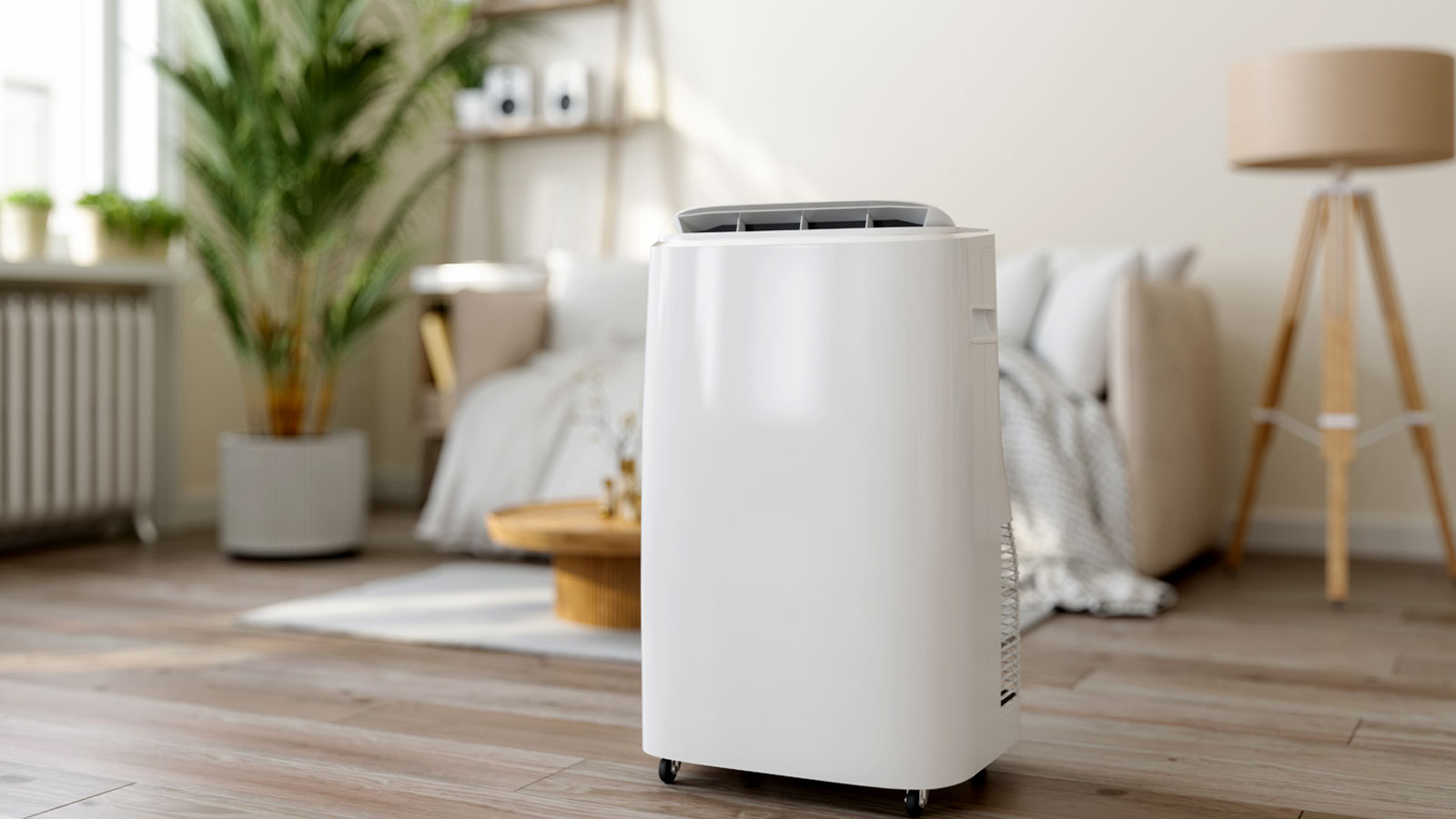
Dehumidifiers are great for pulling moisture out of the air. They get rid of condensation, dust and pollen, but if you're not cleaning a dehumidifier regularly it will soon stop working efficiently. This can lead to unwanted wear and tear and higher running costs.
Even the best dehumidifiers need regular attention. For most dehumidifiers this will be making sure that the dust filter is kept free of dust and making sure water doesn’t sit in the tank. Here you’ll get expert direction on how to keep your dehumidifier clean and running smoothly.

Chris has been advising on humidity solutions and dehumidifiers since 1991 and is well known within the dehumidifier industry across the world as a lead on innovation and sustainability. Since the mid-90s Chris has been a guest speaker at numerous conferences to teach museum conservators how to measure relative humidity.
Why cleaning a dehumidifier keeps costs down
You need to clean a dehumidifier regularly, explains Chris Michael, managing director at Meaco. “Regularly cleaning a dehumidifier is crucial for maintaining its efficiency and keeping energy costs down.”
He adds, “The air filter, also known as the dust filter, requires regular attention, as dust and dirt can accumulate, limiting airflow and forcing the unit to work harder.”
And this will lead to problems as Michael confirms, “This not only increases energy usage but can also lead to overheating or, over time, cause parts to wear out or fail.”
Try these dehumidifiers for your home
Prices correct at publication
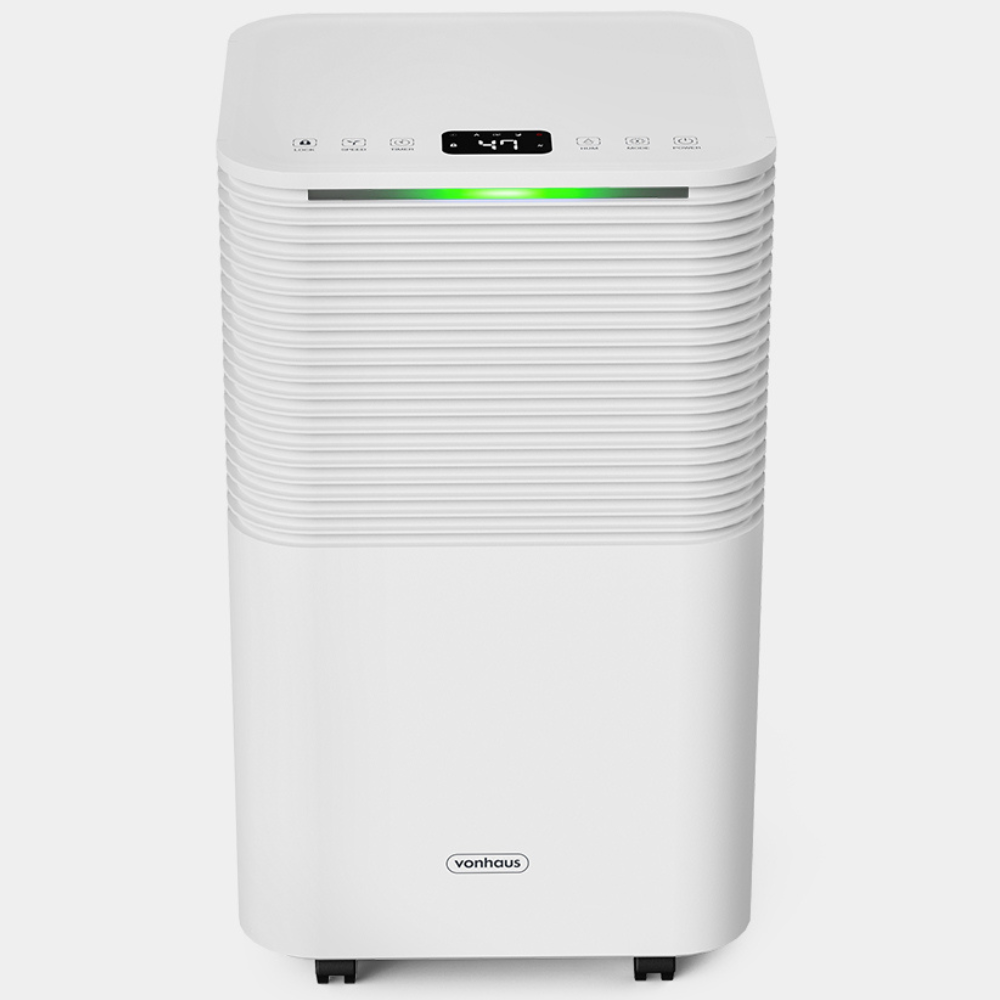
A sleek, compact dehumidifier that works quietly in any room in the home up to 15m2. Has low energy consumption and can extract up to 12 litres of water a day.
How to clean a dehumidifier
Cleaning is very much part of dehumidifier maintenance. Here Chris Michael shares the steps to follow to keep a dehumidifier clean and working at its best. He recommends cleaning the filter every two weeks.
1. Unplug the unit
It's a simple start, but for your safety Michael says, “Ensure the dehumidifier is off and unplugged before cleaning.”
2. Clean the dust filter
Before you start you will need to remove the dust filter from the dehumidifier. Check the manufacturers manual for instructions. Once the filter is removed Michael says, “Carefully vacuum it.” He adds, “If the suction of the vacuum cleaner is too strong, you can also use a damp cloth and warm soapy water, to gently wipe the dirt away.” Note that, “The water should be no hotter than 40°C.”
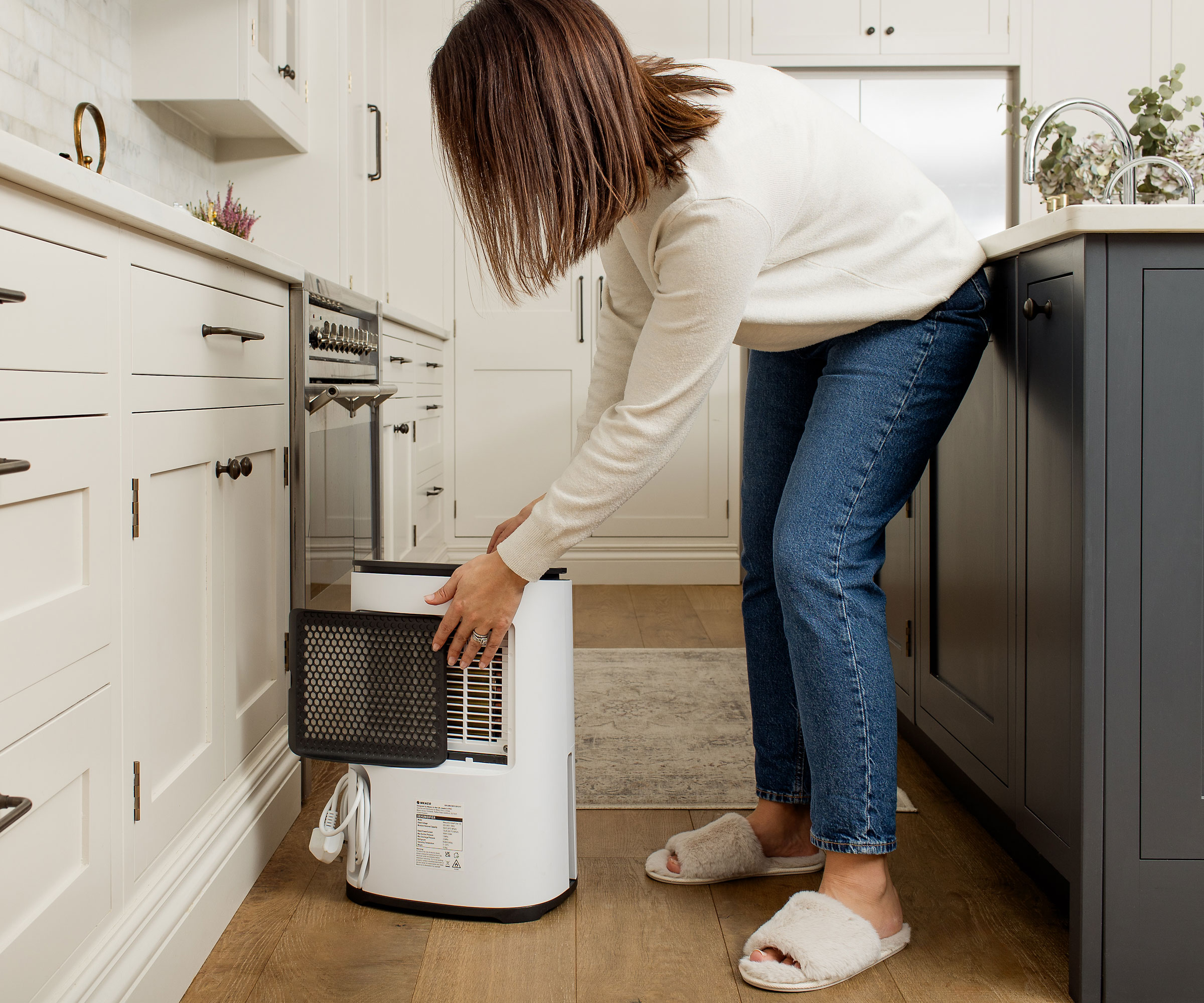
3. Dry and replace
The purpose of cleaning the filter is to remove the accumulated dust. Once this has been done Michael says, “Simply dry the dehumidifier filter with a tea towel before placing it back in the dehumidifier.” If you follow these instructions Michael points out, “The air filter (if you have one) should not need replacing, except for reasons of wear and tear.”
4. Check and clean water tank
Alondside keeping the dust filter clean the tank should get a wash, but not as often as Michael shares, "The tank should be emptied regularly and cleaned once or twice a year with warm, soapy water to prevent mould and bacterial growth. Rinse it thoroughly and let it dry before reinserting into the dehumidifier."
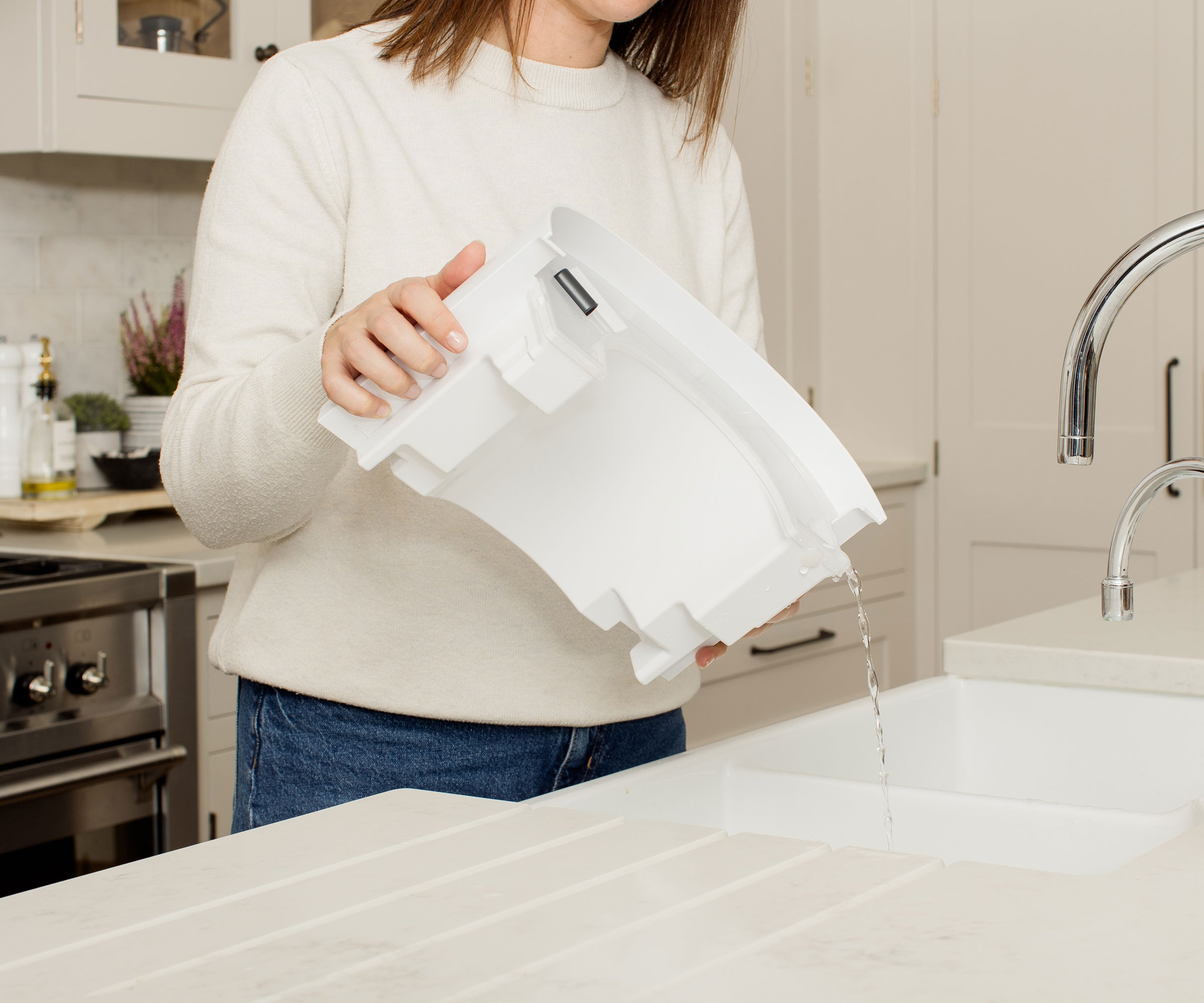
5. Clean the exterior
To finish Michael says, "Wipe down the exterior to keep dust and dirt from entering the unit. Use a soft, damp cloth and avoid using harsh chemicals." A microfibre cloth is a good choice for this job.
Try these to help keep a dehumidifier clean
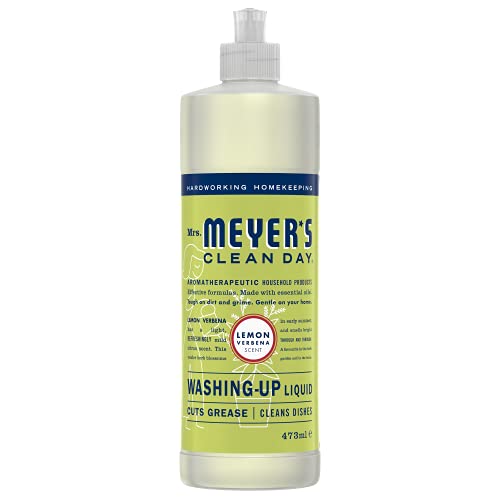
An eco conscious dish soap that uses plant-derived degreasers to make grease disappear. Has a cruelty-free and biodegradable formula and recyclable packaging.
Replacing an air filter
An air filter is very much a part of a dehumidifier and will need replacing regularly as Michael explains, “In order to maintain fresher, cleaner air in the home we recommend the HEPA filter (if your dehumidifier has one; not all do) is replaced roughly every three months.”
If your dehumidifier does have a HEPA filter Michael explains the benefits, “The HEPA filter provides enhanced air cleaning capabilities, turning your dehumidifier into a combined dehumidifier and air purifier.” He adds, “The HEPA is used in addition to the air filter that comes as standard in dehumidifiers so that you can get two stages of filtration. The old HEPA filter should be disposed of.”
Avoid cleaning dehumidifier coils
Dehumidifiers have a set of coils that help turn humid air into liquid form - water. These can be delicate and difficult to reach. Michael advises against cleaning them, “We advise users not to disassemble the unit for coil cleaning, as the coils are delicate and attempting to clean them could cause damage, potentially invalidating the manufacturer's warranty.”
He suggests, “Instead, just keeping the air filter clean is the best way to ensure the coils remain in good condition, as this prevents dust buildup that could otherwise reach and affect the coils.”
FAQs

Adele Brennan has 11 years’ experience within the retail industry and currently specialises in home electrical products. Within her current role, she is responsible for sourcing and choosing high-quality products for retail.
How do you clean out mould from a dehumidifier?
If you leave the bucket of a dehumidifier mould can start to grow. If it does you will need a little more patience and elbow grease than normal as Adele Brennan Home electrical buyer at Domu Brands Ltd explains, “If you’re dealing with mould and it seems harder to remove, use warm water and mild dish soap but leave it sitting for a little bit before trying to clean off the mould and residue with a sponge or cloth.”
But this method might not work for stubborn mould. If this is the case Brennan says, “You can use a mould spray to remove the stubborn residue. It is advised to leave it sitting for a while, and then you can wipe away the mould. She adds, “It is important to make sure the water tank/bucket is rinsed out properly and dried before being put back into the main part of the dehumidifier.”
It is important to note that you should not use boiling water to clean the water tank.
How often should a dehumidifier be emptied?
How often you need to empty a dehumidifier depends on a number of factors as Brennan explains, “In terms of emptying a dehumidifier, it mainly depends on the size of your model and how often you use it. If you’re leaving it to run day and night, you may have to empty it once in the morning and once in the evening.”
Obviously, if you use less then you won’t need to empty as often as Brennan shares, “If you’re using it less often, we’d recommend emptying every couple of days to make sure mould doesn’t build up.” She adds, “If you’re not planning on using it again straight away after cleaning, it is advised to dry the appliance thoroughly to further prevent mould.”
Dehumidifiers are great for removing moisture out of the air. To make sure you are using it correctly and getting the best from it check out these dehumidifier mistakes, our piece on whether dehumidifiers dry clothes effectively and dehumidifier running costs.
Get the Homebuilding & Renovating Newsletter
Bring your dream home to life with expert advice, how to guides and design inspiration. Sign up for our newsletter and get two free tickets to a Homebuilding & Renovating Show near you.
Steve Jenkins is a freelance content creator with over two decades of experience working in digital and print and was previously the DIY content editor for Homebuilding & Renovating.
He is a keen DIYer with over 20 years of experience in transforming and renovating the many homes he has lived in. He specialises in painting and decorating, but has a wide range of skills gleaned from working in the building trade for around 10 years and spending time at night school learning how to plaster and plumb.
He has fitted kitchens, tiled bathrooms and kitchens, laid many floors, built partition walls, plastered walls, plumbed in bathrooms, worked on loft conversions and much more. And when he's not sure how to tackle a DIY project he has a wide network of friends – including plumbers, gas engineers, tilers, carpenters, painters and decorators, electricians and builders – in the trade to call upon.
